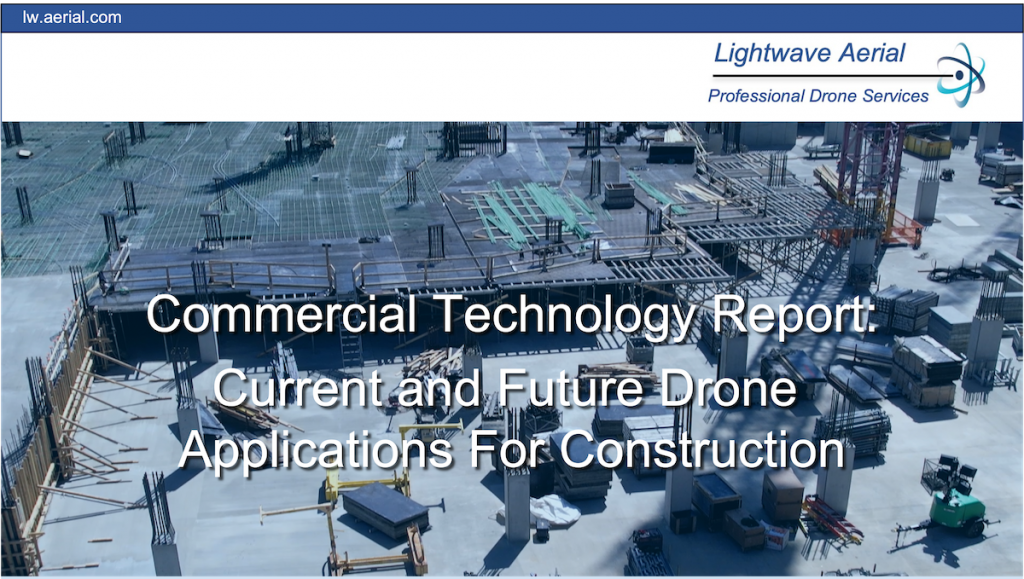I’d always learned that drone operators pretty much had carte blanche to fly over private property. But it didn’t really make sense to me, because there have to be some limits on what I can do with my drone. So as usual, I did some research, and I found that the story is interesting and complicated.
The federal government and the FAA do not impose restrictions on flying your drone over private property. However, the federal government has acknowledged that the states and local jurisdictions do have some say-so in the matter. States typically restrict drones based on trespassing, privacy, or nuisance regulations and they can impose serious fines. So, it’s important to know the rules in your state, in your city, and maybe even in your community.
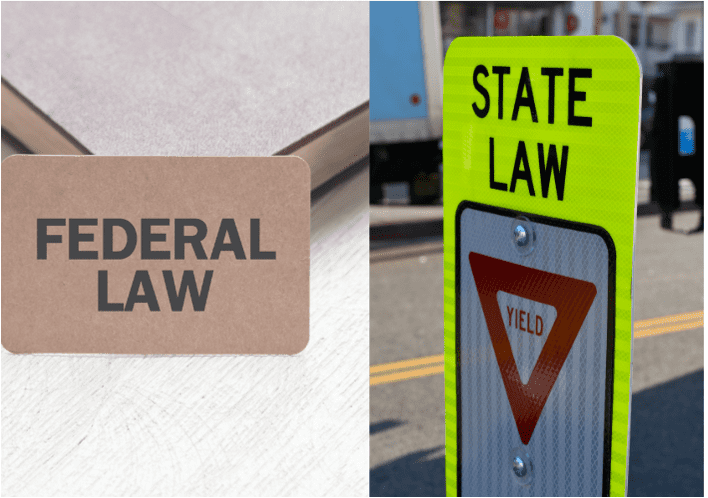
Whether you fly a drone for recreation or if you’re a commercial pilot. Chances are at some point you will need to fly your drone over private property. The legal landscape is pretty complex, and we anticipate the rules will change substantially over the next decade. We’ve summarized everything you need to know to get your jobs done, stay safe, and be considerate of the non-drone flying community.
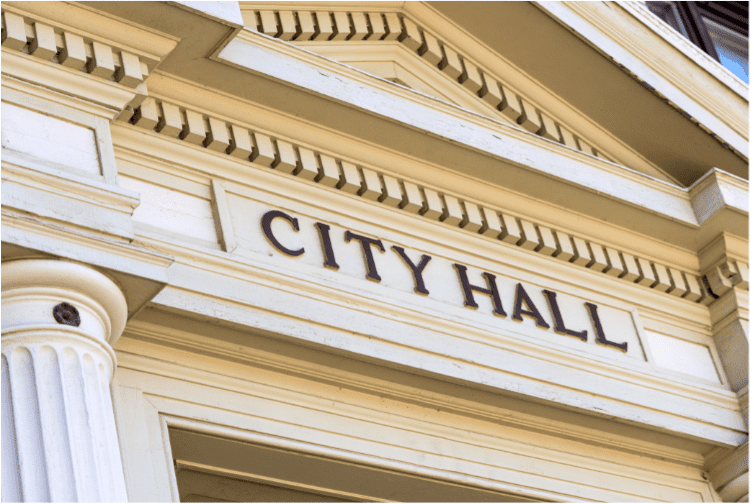
What is Federal Law Regarding Drones and Private Property?
The federal government does not impose any restrictions to fly a drone over private property. The FAA’s position is that the US government owns all airspace over the US, and drones are technically considered aircraft. The FAA and the government have defined specific no-fly and restricted-fly areas, but none of these restrictions apply to private property.
You can find a map of all federally restricted no-fly zones on the FAA website.
Even though the FAA does not restrict flying your drone over private property, they do recommend you follow a set of voluntary best practices. These recommendations ensure that you are being considerate of private property owners.
What are State Laws Regarding Drones and Private Property?
Since 2017 states I’ve been working hard to establish rules and regulations for drone use. Since most of your interaction will happen on the state or local level it’s very important that you understand these drone laws. For the most part, these state laws fall into one of four categories.
Trespass & Privacy Laws
Today there are six states that restrict airspace over private property based on trespassing and or privacy laws. They are Florida, Virginia, Texas, Utah, Mississippi, and California. The trespassing laws essentially say that the homeowner or private property owner also owns the air space, therefore any flights over the property can be considered trespassing. One legal technicality is that it’s only trespassing if the owner has previously notified the drone operator not to fly a drone, either verbally or by posting a sign.
It’s important to know that these trespassing laws are in direct conflict with federal laws about airspace and drones over private property.
Privacy laws have to do with taking photos or videos of people without their consent. It makes sense, you don’t want somebody taking pictures of you while you’re nude sunbathing in the backyard. This won’t be a problem for most drone operators because you’re probably just flying over the property and not taking pictures of anyone. Plus, in order for a drone operator to be charged with this they have to prove that you’re actually taking pictures or video.
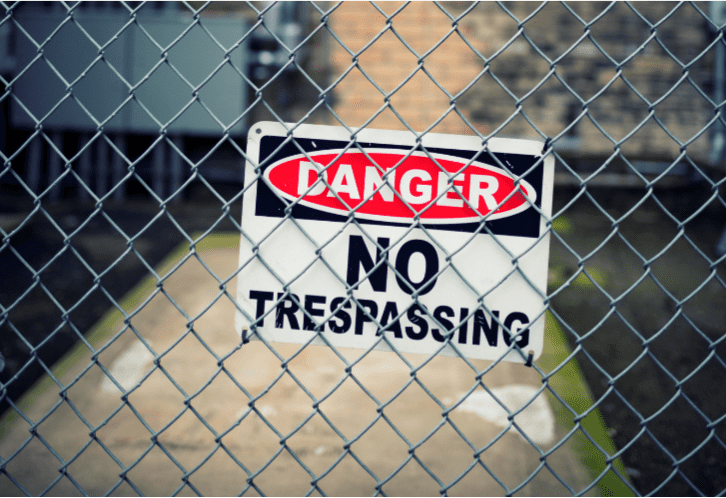
Nuisance Laws
The next category of state laws has to do with creating a nuisance. This could be anything from flying so low that the noise from the drone creates a disturbance for people or animals. If you fly a drone in a dangerous or reckless manner where someone thinks they might get hurt could also be considered a nuisance.
Critical Infrastructure Laws
State drone laws restrict flying a drone over critical infrastructure. This includes things like power plants, correctional facilities, mental health facilities, and open-air facilities. The reason why you can’t fly over correctional facility should be obvious. As far as power plants, they’re probably concerned about sabotage at worst, or at best you might you can crash your drone and take out the power grid.
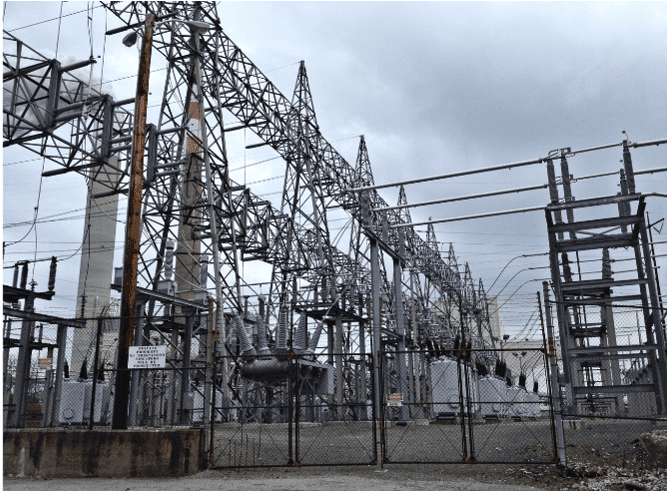
First Responders Laws
The last category of rules restricts flights over first responders and law enforcement. This is obviously meant to ensure that drones don’t get in the way of critical or life-saving operations.

What Are Local Laws Regarding Drones and Private Property?
Your local municipality or even your community organization may have established restrictions on flying drones. How can you find out what these rules are? Even calling local law enforcement may not be helpful – local police are not always informed about drone regulations. Instead, your best bet is to call the local city hall and ask there about local drone ordinances- backed up by as much online research as you can find to identify a potential problem.
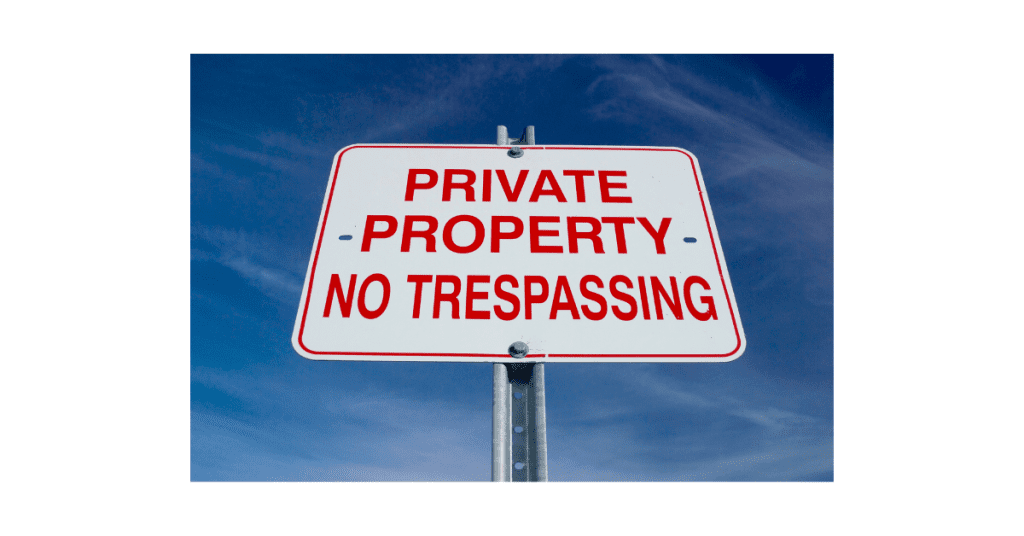
What are the Consequences of Flying a Drone Over Private Property Without Permission
In the states that have trespassing and privacy restrictions, if you’re caught then it’s typically a class one misdemeanor. While you’re not going to get thrown in jail, they still do take it pretty seriously. In California specifically, they can impose impulse fines up to $50,000 which is no joke. And in Mississippi, if you’re found taking pictures for “lewd” purposes, then you can potentially be charged with a felony.
What To Do If You’re Confronted
When we first started our drone business, I took a pretty dim view of anyone telling me I could not fly the drone wherever I wanted. But now I realize that most people aren’t being jerks, they mostly have real concerns. Most of the time they just want to make sure that you’re not doing something crazy, sketchy, or anything that might hurt people or damage to the property. Of course, sometimes they’re jerks, but that’s life. Having said that, there are some basic things you can do if you are confronted.

If confronted when flying your drone, we recommend the 2-P’s: preparation and professionalism. Prepare by notifying property owners when and where the drone flight will occur and use the smallest drone possible for the job. Be professional by displaying your pilot’s license, wearing a safety vest, carrying business cards, and having a contract or other documentation verifying the reason for the flight.
Civilian Confrontation
Our recommendations are based on FAA-recommended best practices and fall into two categories: preparation and professionalism. Whenever possible notify property owners that a drone flight will be occurring in the area and explain the reason for the drone flight. Let them know that it’s possible the drone will fly over their property but also let them know that you won’t be taking any pictures and apologize in advance for any inconvenience.
You do not need permission to fly, but it’s better to prevent problems than to react to them. Also, we use always the smallest drone possible for the job so that we attract less attention. My personal favorite drone is the DJI Air 2S. For details on the Air S see our article “DJI Air 2S vs Competitors: Return on Investment“
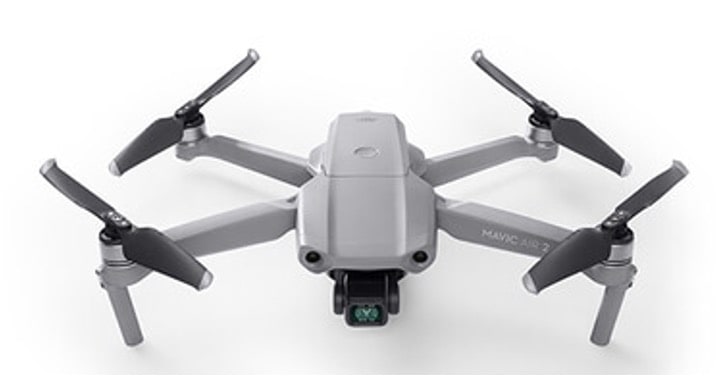
Look professional and be professional. Always dress the part, display your Part 107 certification, wear your safety vest, and carry business cards. Also, have any contract or email correspondence documenting you have a reason to fly in the area. Here’s what you do: apologize for any inconvenience, show the person your FAA pilot’s license, and give them a business card. Give a quick rundown of why you’re there, what are you doing and how much longer you’ll be around.
At this point you look like a professional and people will generally leave you alone. I’ve found that civilians are usually more curious than confrontational.
Law Enforcement Confrontation
Here’s where you have to be a bit more differential, but the same rules apply. Make sure that you have your FAA pilot’s license prominently displayed, wear your safety vest, and if you have any clothing with your business logo that’s very helpful. Explain to the police officer why you are there, and what you’re doing, and give them a business card so they know who you are.
I often run into this problem flying in the Northern Virginia and Washington DC areas. There are a lot of Amazon data centers and companies that work for the government. Even though the areas have no flight restrictions, we’ve been confronted by corporate security and several other law enforcement agencies. I follow our preparation and professionalism procedures and I’ve never had a problem. You might be interested in our article on No-FLy Zones.

Can Law Enforcement Fly Drone Over Private Property?
Law enforcement can fly a drone over private property just like any other drone pilot to get from point A to point B. However, law enforcement cannot perform any type of surveillance with that drone, in the form of photography or video without a warrant. These laws are much more restrictive for law enforcement than they are for civilian drone pilots.
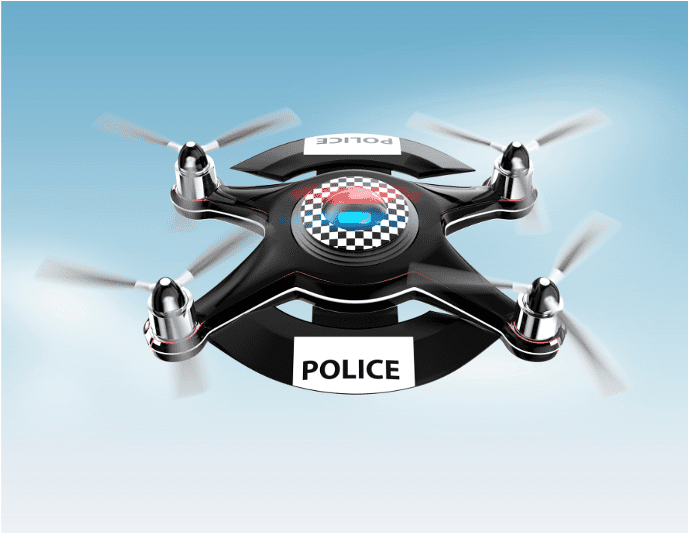
How Low Should You Fly Over Private Property?
The Supreme Court of the United States in 1946 found that planes flying below 83 feet could be restricted because they interfered with the owner’s enjoyment of his property. We have found that the tree line is often used as a practical separation between private property airspace and open airspace. This corresponds to approximately 75 feet.
Lightwave Aerial has established a best practice of staying above the tree line whenever possible.
In United States v. Causby, the Supreme Court of the United States in 1946 provided guidance on where private property rights for airspace end and navigable airspace begins. The court found that aircraft flying at 83 feet interfered with the owners’ use and enjoyment of the land.
Obviously, in 1946 they were no drones, and this case considered the impact of airplanes flying at 83 feet. But the basic idea is that the property owner should be able to enjoy the use of his property. Any flights over that property that interfere with the enjoyment or use of his property can be subject to restrictions.
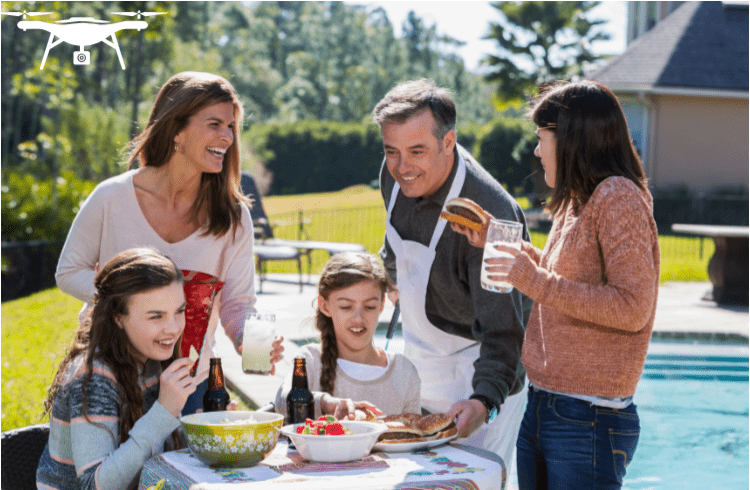
The FAA takes a very different position. They say that all airspace can be used for manned and unmanned aircraft. This obviously doesn’t make any sense. It means a 747 could buzz your house as long as it didn’t touch the ground. So we definitely expect that as drones become more visible, the public will demand a change in federal laws.
In our research, we’ve found that most jurisdictions use tree height as a reasonable demarcation for private property. If you keep your drones above tree height which is typically around 75 feet then you should not have any problem.
Tips For Flying Over Private Property
Flying a drone over private property does not need to be a major problem. A few simple precautions and considerations can save you a lot of potential headaches.
Plan Your Flight
Plan your mission in advance. Visit the site before flight time, scope out the area for any obstructions or potential problems, get a sense of how long the mission will take, and visualize the entire mission from end to end. Identify your take-off/landing location and also identify a backup landing point in case of an emergency.
Notify stakeholders
Let homeowners know that you will be flying a drone in the area. Let them know the reasons for the flight, what day and time, and approximately how long it will take. Inform them that there may be some flights passing over the property but that you will attempt to stay above the tree line and not create any problems. Ask if they have any concerns or special requests.

Have Documentation
If you’re doing a commercial flight, make sure that you have a contract from your employer or some type of documentation verifying the job. We always recommend having written copies of your safety protocols, your mission plan, and your certificates of insurance.
Be Professional
If you look like you belong then people will generally assume that you belong. We recommend always having your commercial pilot’s license prominently displayed, wearing a safety vest, and if you have any gear with your business logo make sure you wear that also. Always have business cards to hand out, it shows professionalism, and you can advertise for more work.
Smaller Is Better
In our jobs, we always attempt to use the smallest drone possible. Even though technically you are within your rights to fly over private property it’s always best to keep a low profile. In most cases, homeowners aren’t even aware that there’s a drone in the area. Again, our favorite drone is the DJI Air 2S.
Stay Above Tree Line
Be respectful of private property owner air space, and always fly above the tree line so that you don’t interfere with activities on private property. Also, it’s possible the owner may have installed some anti-drone netting in the trees, so this is also a mission safety issue.
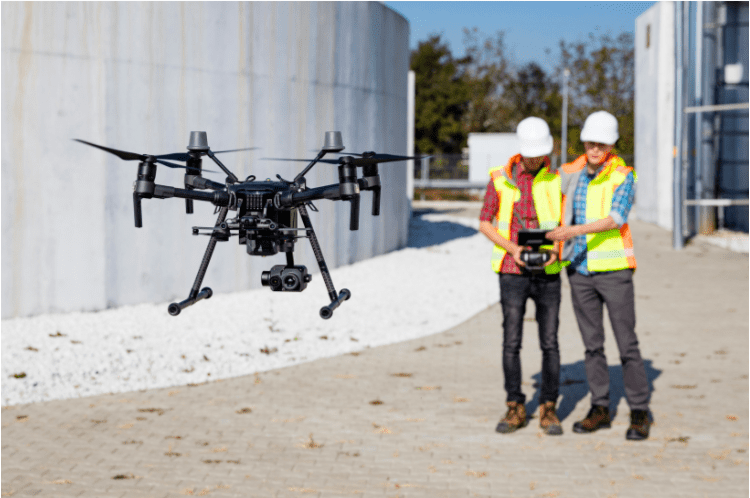
Future Regulations
Drones are still a relatively new technology so it is uncommon for the public to see drones. We expect future applications will create a situation where there are many more drones deployed. This will create many more situations where the public will have negative interactions with drones, whether as a nuisance or as a hazard.
The current federal legal viewpoint that drones can fly anywhere will be challenged by public opinion. This will be in direct conflict with the desires of business owners that will use drones to support logistics or to provide services.
This has already happened at the state and local levels, we expect similar conflicts to occur at the federal level in the near future. We believe that drone flight regulations will become more restrictive.
Lightwave Aerial is a professional drone service company based in Northern Virginia. Our pilots are all FAA Part-107 certified. We offer a full range of aerial photo/video production services, aerial mapping, and aerial inspection.
At Lightwave Aerial, we are dedicated to providing professional drone services that help our clients achieve their goals. Contact us today to find out more about how we can help you with your next construction project!



